Introduction
Piercing is not just a form of self-expression.
It’s a bodily intervention that requires careful and responsible consideration. Every piece of jewelry, especially during the healing phase, plays a vital role: the material you choose affects the healing speed, comfort, and overall condition of the skin.
Choosing jewelry isn’t just a matter of taste — it’s a decision that directly impacts your health. That’s why professionals increasingly choose titanium — a material that combines medical safety, aesthetics, and comfort.
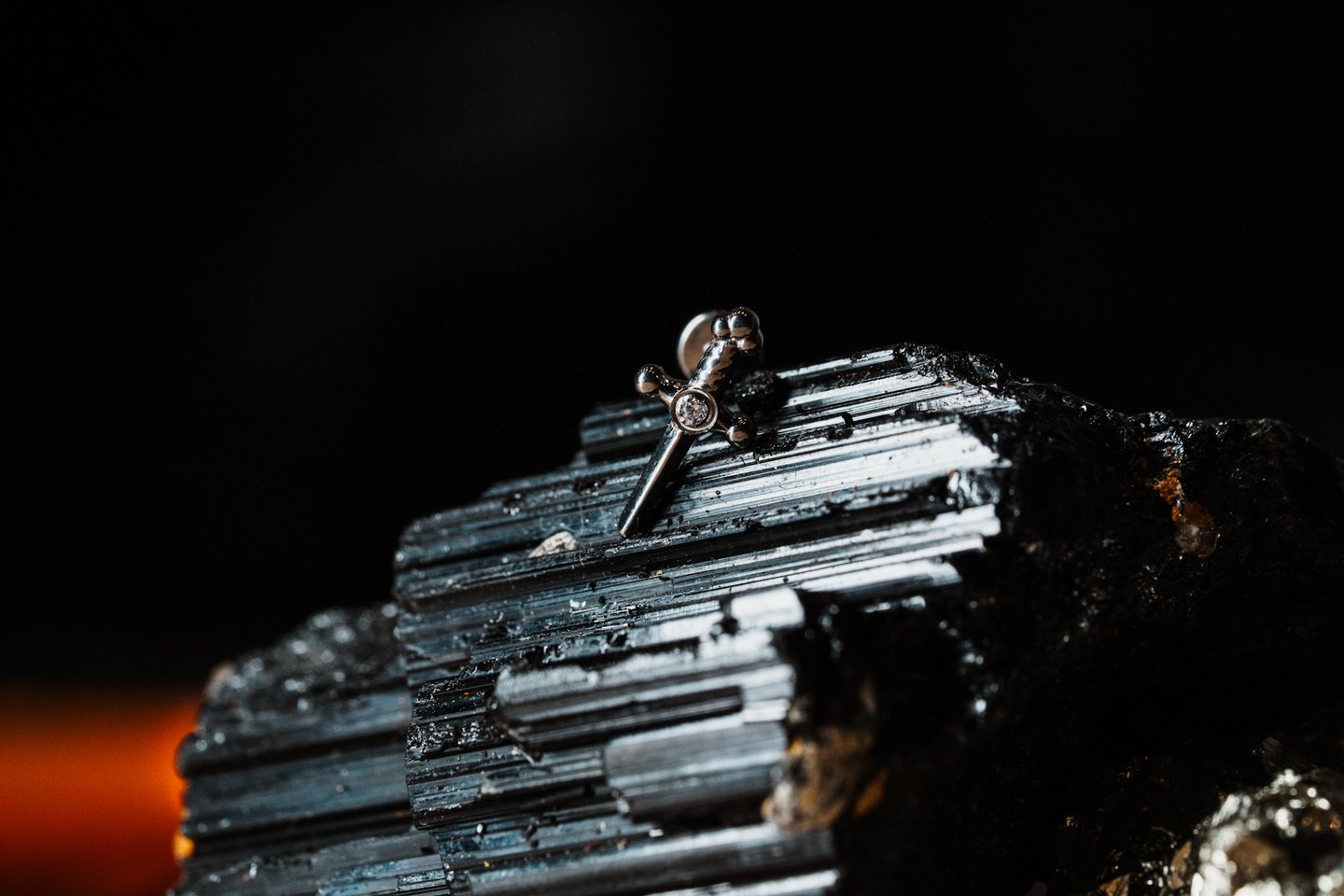
Why the Jewelry
Material Matters
After a piercing, the skin becomes vulnerable. It reacts to any irritants — from touch to the metal’s composition inside the wound.
If the jewelry is made from an unsuitable material, it can lead to inflammation, allergic reactions, slow healing, or even rejection.
The most dangerous are alloys with high nickel content, porous metals, and cheap, unmarked jewelry. These pieces may look attractive but often cause serious complications. That’s why choosing the right material isn’t just an accessory to the procedure — it’s an essential part of it.
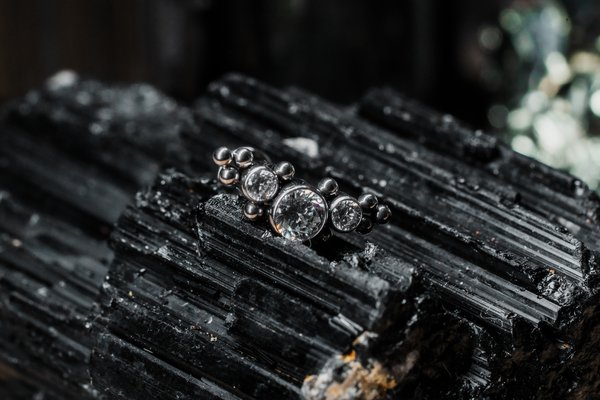
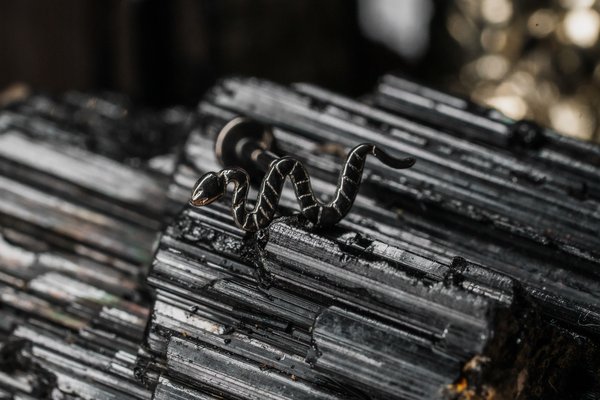
Titanium: Universal and Reliable
Titanium is a metal widely used in medicine.
It’s used to produce implants, prosthetics, and bone fixation screws. Its key properties are strength, lightness, and full biocompatibility with human tissue.
For piercing, medical-grade titanium (ASTM F136 or F1295) is used. It’s a high-quality metal that doesn’t cause allergic reactions, doesn’t oxidize, and doesn’t interact with bodily fluids. Its smooth, polished surface minimizes friction, doesn’t damage tissue, and doesn’t cause inflammation. That’s why titanium has become the gold standard in professional piercing.
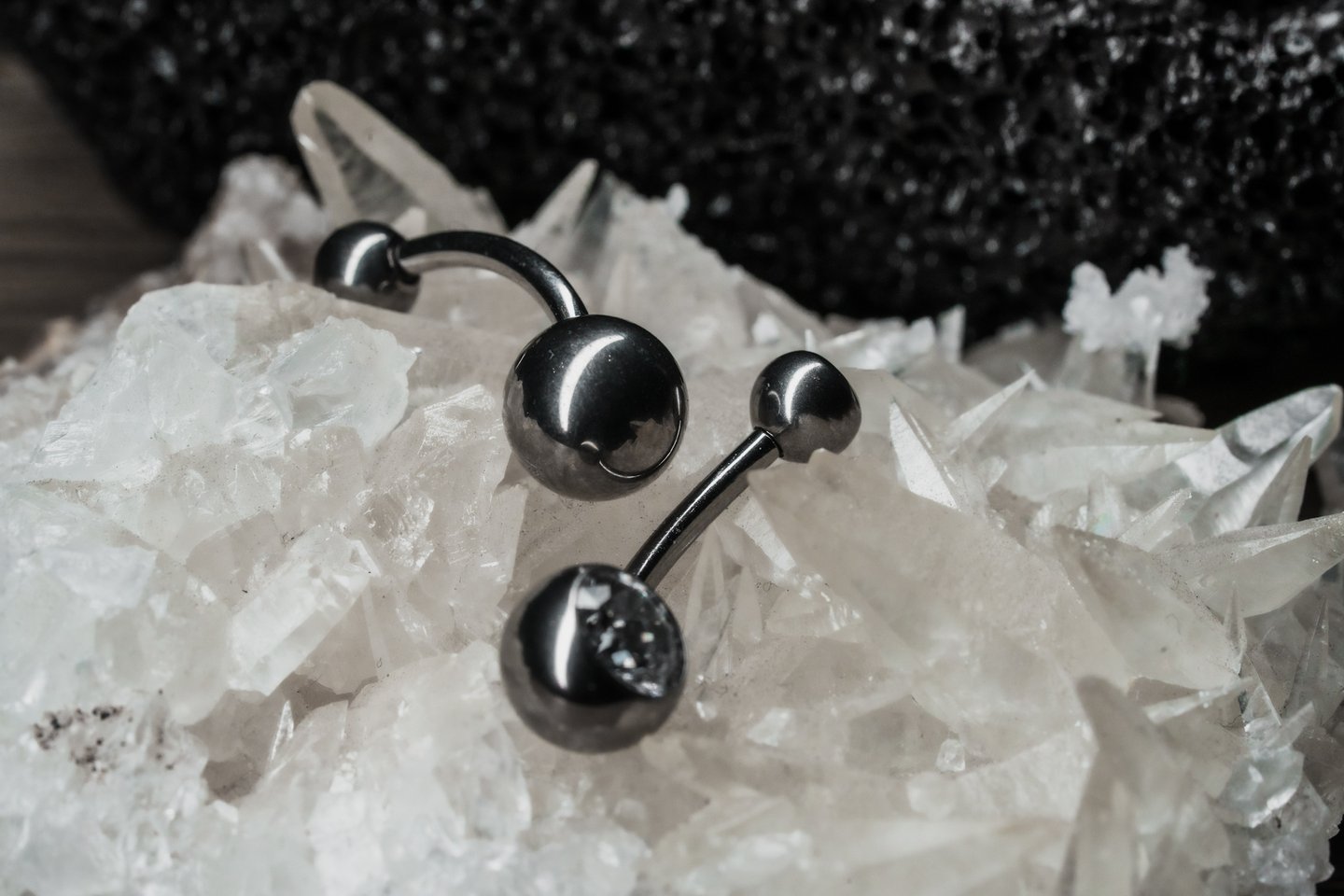
Advantages of Titanium
for Piercing
- Hypoallergenic and Safe
- Titanium contains no nickel — the main cause of allergic reactions in metal jewelry. It’s perfect for sensitive skin and people prone to dermatological issues. It’s one of the few materials that virtually eliminates the risk of irritation or redness, even in difficult cases.
- Fast and Comfortable Healing
- Titanium jewelry doesn’t interfere with the formation of the piercing channel, doesn’t cause friction, and doesn’t damage tissue from the inside. This allows the piercing to heal faster and go through all healing stages without complications. Clients with titanium jewelry report fewer scabs, discharge, or swelling.
- Durability and Reliability
- Despite being lightweight, titanium remains one of the strongest metals. It doesn’t bend or break even under significant pressure. Titanium jewelry retains its shape and integrity in all conditions — from an active lifestyle to sports or temperature changes.
- Lightweight and Comfortable
- Titanium is significantly lighter than steel or gold. The jewelry is barely noticeable on the body, which is especially important for piercings in cartilage, on the face, or in sensitive areas. The lack of pressure and weight makes it comfortable to wear from day one.
- Aesthetic and Variety
- Thanks to anodization, titanium can take on dozens of shades — from deep blue to golden. This isn’t paint, but an oxide layer formed within the metal, which doesn’t fade or wear off. Modern titanium jewelry impresses with its variety of shapes and designs — from minimalist to extravagant — allowing wearers to combine safety and individuality.
- Thanks to anodization, titanium can take on dozens of shades — from deep blue to golden. This isn’t paint, but an oxide layer formed within the metal, which doesn’t fade or wear off. Modern titanium jewelry impresses with its variety of shapes and designs — from minimalist to extravagant — allowing wearers to combine safety and individuality.
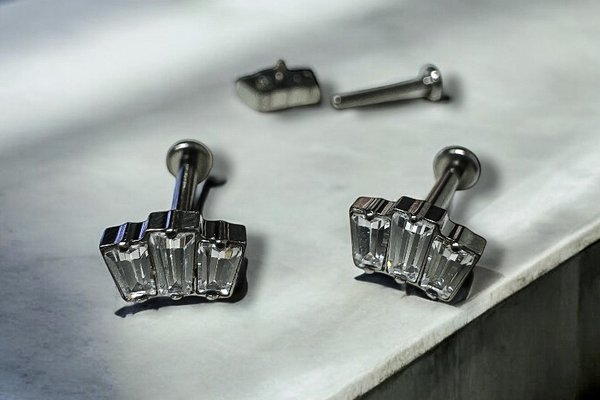
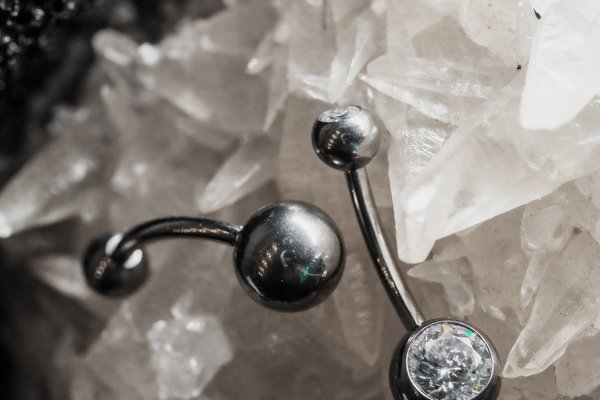
Comparing Titanium to
Other Materials
- Titanium
Titanium is the undisputed leader among materials used in piercing. It’s completely hypoallergenic, nickel-free, and ideal for initial piercings. Its lightness means it doesn’t put pressure on tissue, especially in areas with thin skin or cartilage. At the same time, it’s extremely strong and resistant to mechanical damage. Its extensive use in medicine proves its biocompatibility and safety. The cost of titanium jewelry is moderate (especially compared to gold) but fully justified by its longevity and reliability. - Surgical Steel
Surgical steel (especially 316L) has been used in piercing for a long time and remains popular. However, even high-quality steel contains a small amount of nickel, which can cause allergic reactions in sensitive individuals. For this reason, it’s not recommended for initial piercings, especially in delicate areas; it’s typically used after full healing. Steel is heavier than titanium but strong. Its main advantage is affordability, which makes it a popular choice for beginners or temporary use. - Gold
Gold jewelry (usually 14K–18K) looks luxurious but isn’t always safe for fresh piercings. Gold is a soft metal prone to deformation. Cheaper alloys may contain impurities that cause inflammation or irritation. That’s why gold isn’t recommended for initial wear. It’s also quite heavy and can put pressure on tissue. The price of genuine, certified gold jewelry is high, especially when safety is a priority. - Silver
Silver is one of the least suitable materials for initial piercings. It oxidizes when in contact with skin and moisture, which can darken the jewelry, irritate the skin, and cause allergic reactions. It’s not suitable for the healing phase and may lead to complications. Despite its moderate weight and attractive appearance, silver lags behind in terms of strength, sterility, and durability. Its price is moderate, but the risks outweigh the benefits. - Plastic (PTFE, BioFlex)
Flexible polymers such as PTFE and BioFlex are skin-friendly and lightweight, so they’re sometimes used in medical contexts or during pregnancy when soft jewelry is needed. However, they fall far behind titanium in strength and durability. Their surfaces are less smooth, which can cause irritation. Sterilizing such materials requires special conditions. Plastic is suitable only for certain situations and is not a universal solution. Its price is low, but safety isn’t always guaranteed.
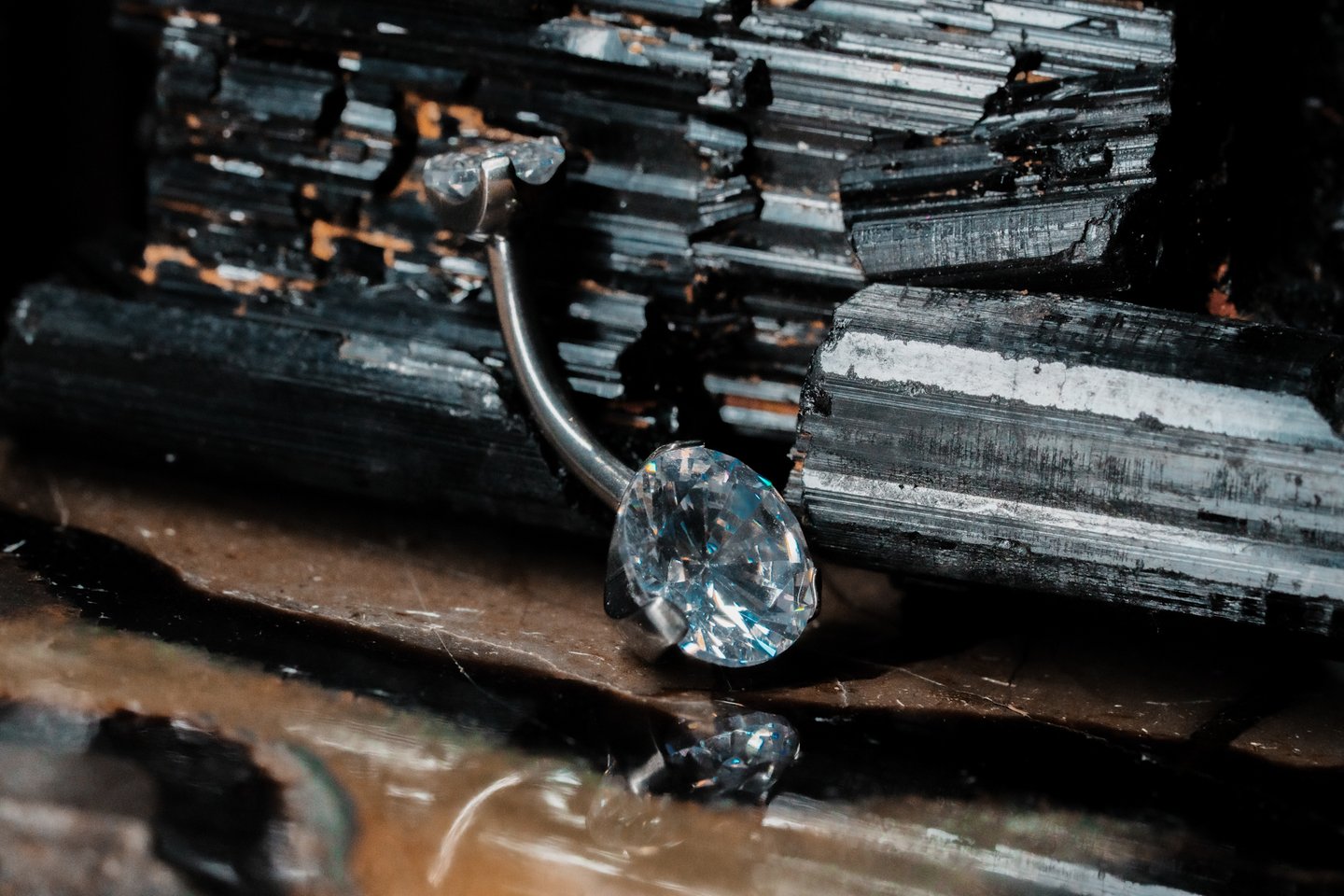
Best Choice for Initial Piercing
A piercing is essentially a controlled wound.
During healing, any mistake can lead to complications. The jewelry you insert into a fresh piercing must not only be beautiful but as safe as possible.
Titanium minimizes most risks: it doesn’t trigger reactions, doesn’t damage tissue, and doesn’t change under environmental influence. It can be sterilized in an autoclave and meets medical standards. That’s why most professionals choose titanium as the primary material for initial piercings.
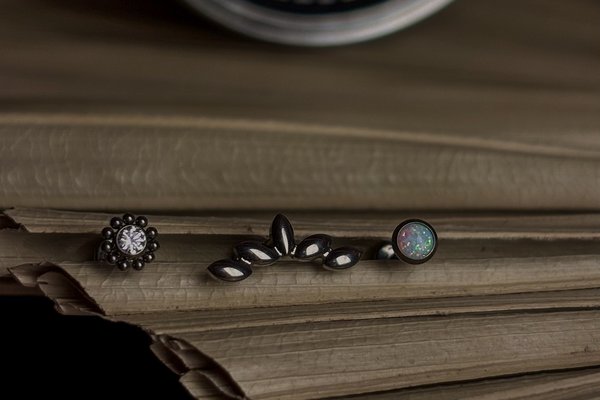
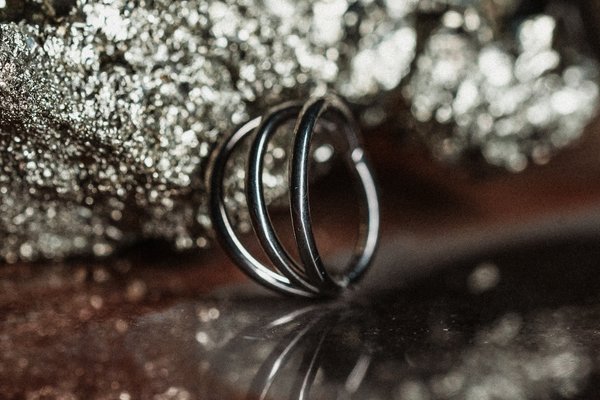
Care for Titanium Jewelry
- When selecting titanium jewelry, make sure it’s marked with ASTM F136 or F1295 — these are official medical-grade standards.
- The jewelry should be smooth, without sharp edges, hermetically sealed, and sterilized.
Care guidelines:
- Avoid touching the jewelry unnecessarily.
- Clean the piercing with gentle antiseptics; avoid alcohol or hydrogen peroxide.
- Don’t remove the jewelry until full healing to avoid damaging the channel.
By following these recommendations, titanium jewelry will serve you for many years without losing its appearance or functionality.
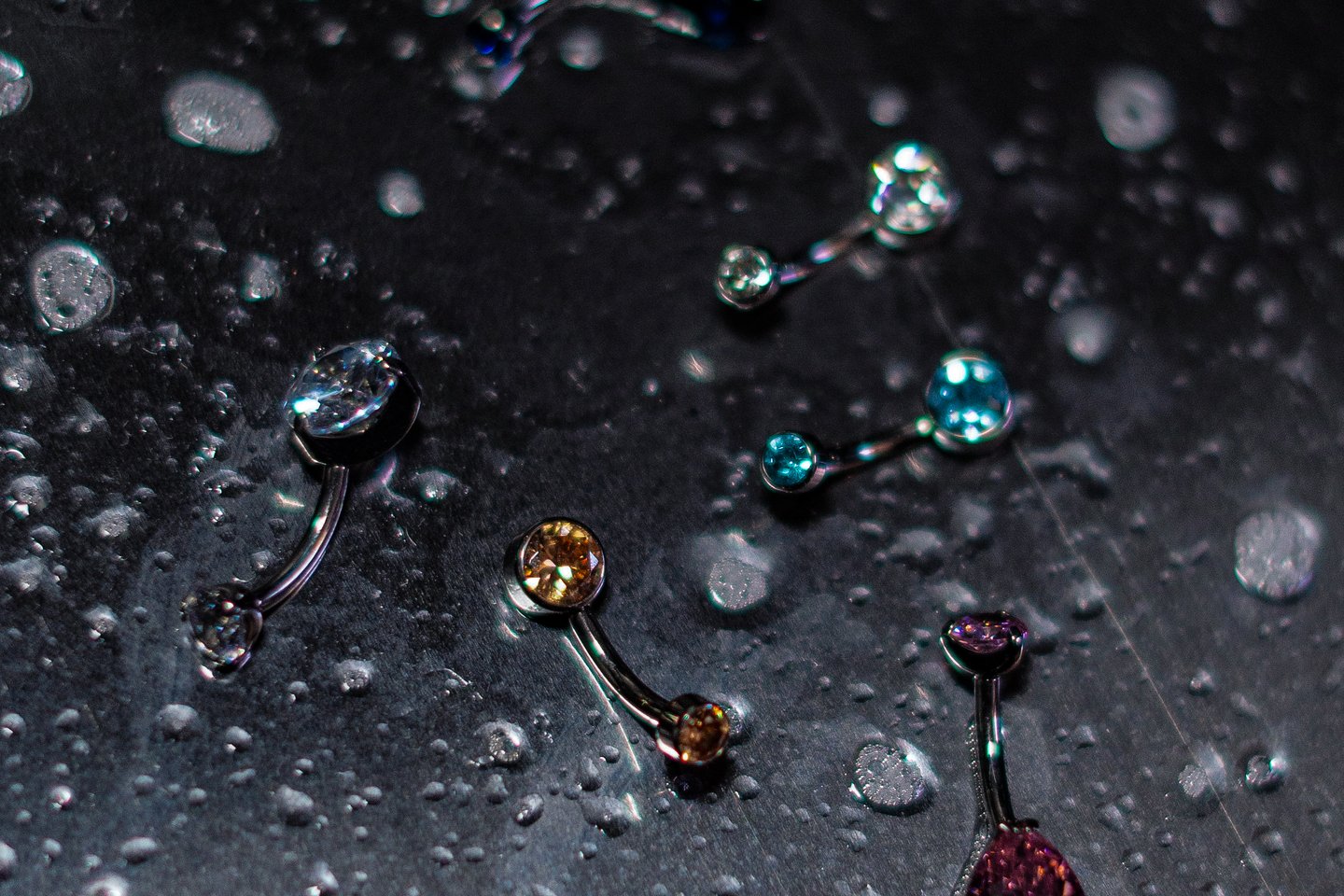
We offer only certified medical-grade titanium jewelry that meets international safety standards.
All items are pre-sterilized and come in sealed individual packaging.
Our piercers are qualified professionals who carefully select jewelry based on anatomical features and always provide thorough aftercare instructions.
At our studio, you can be confident in the quality of service, cleanliness of instruments, and reliability of materials.
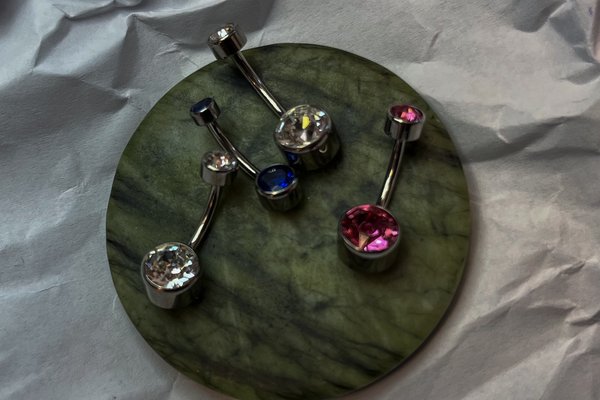
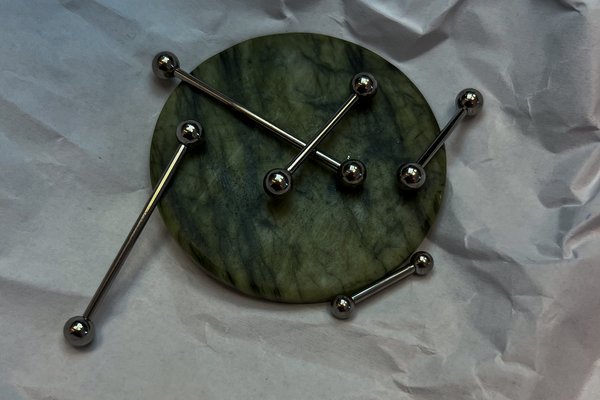
Titanium is more than just a metal — it’s a guarantee of safety, comfort, and style.
It combines everything that matters in modern piercing: hypoallergenic properties, strength, lightness, and aesthetics.
If you want your piercing to heal quickly, look great, and feel comfortable — choose titanium.
Trust only proven materials and professionals who care about your body as much as you do.
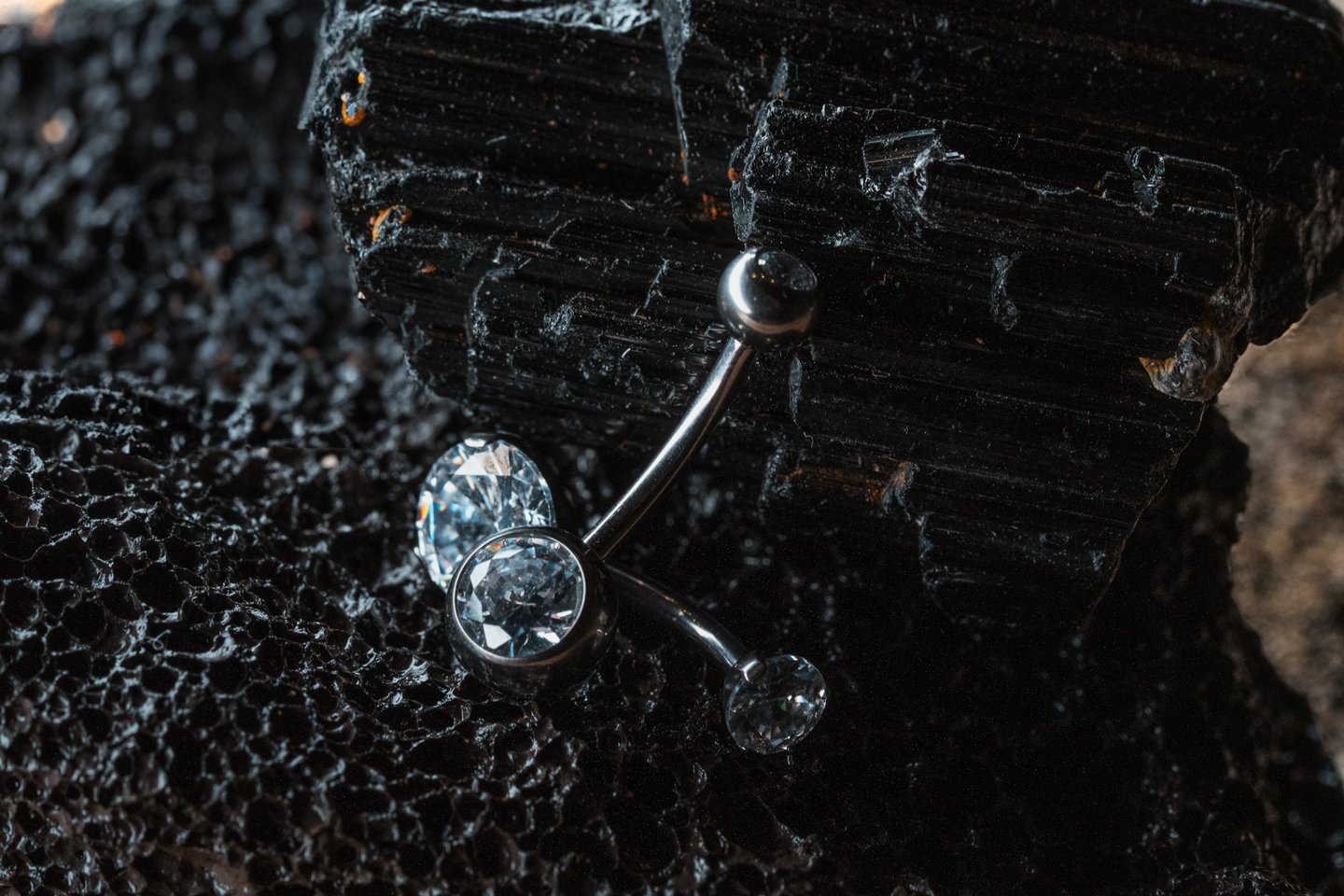


 Create a sketch in the VEAN TATTOO AI generator
Create a sketch in the VEAN TATTOO AI generator





